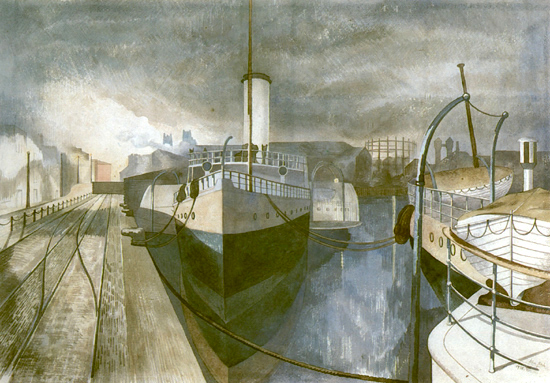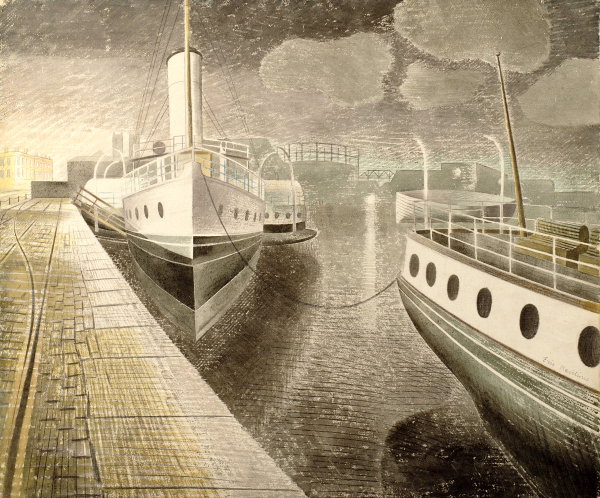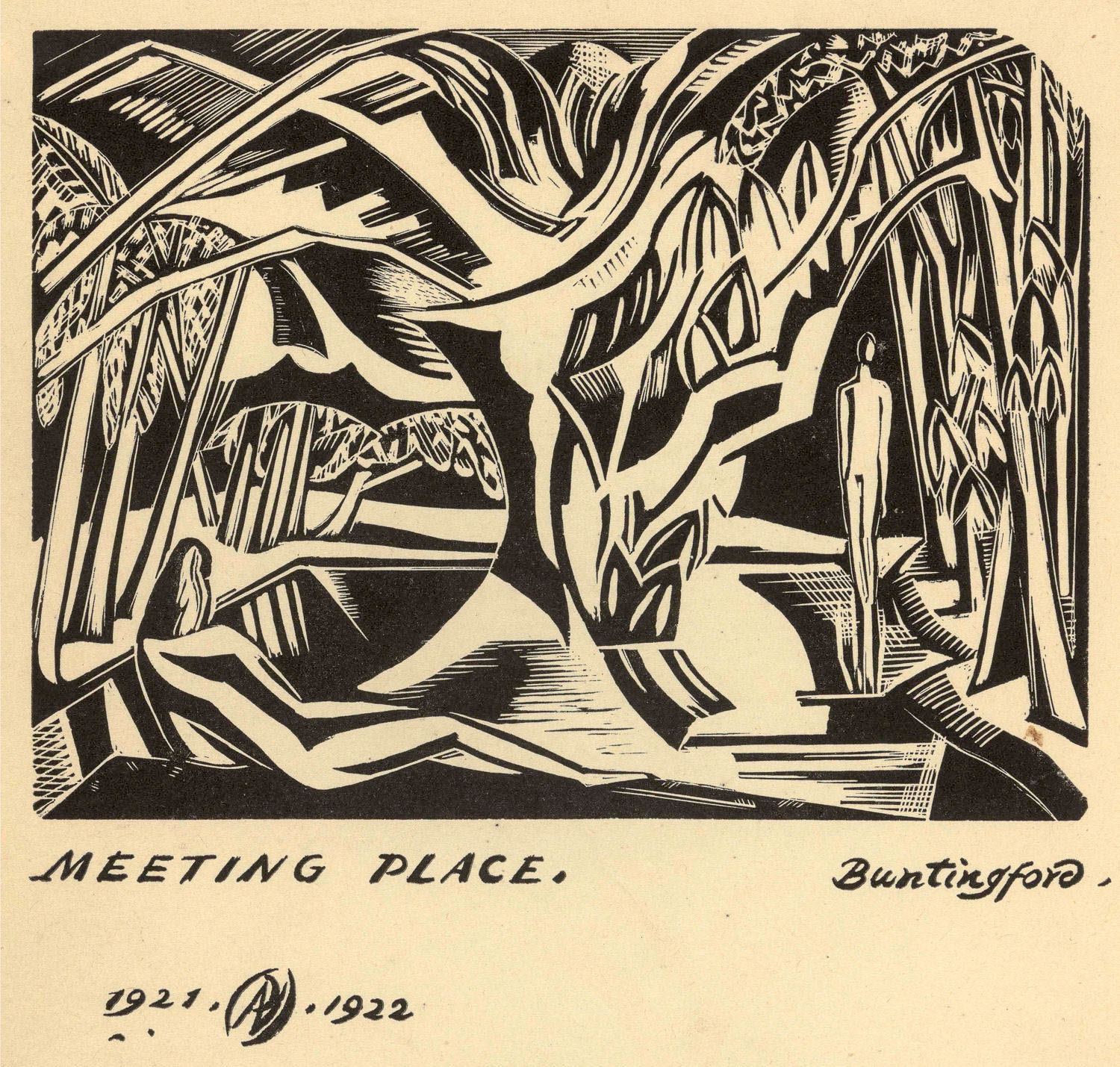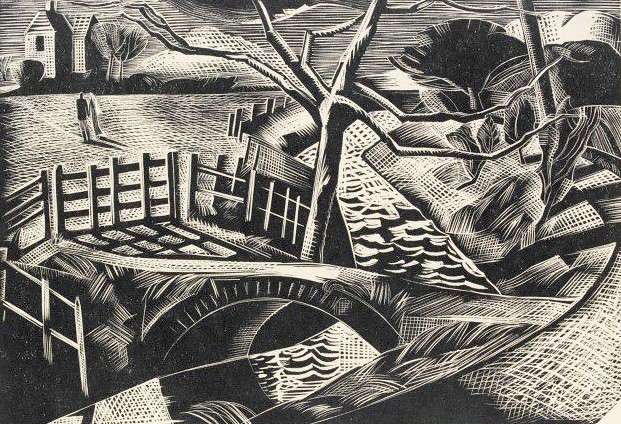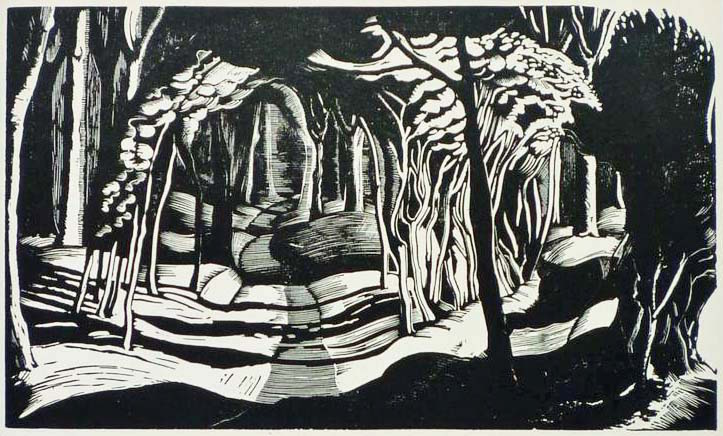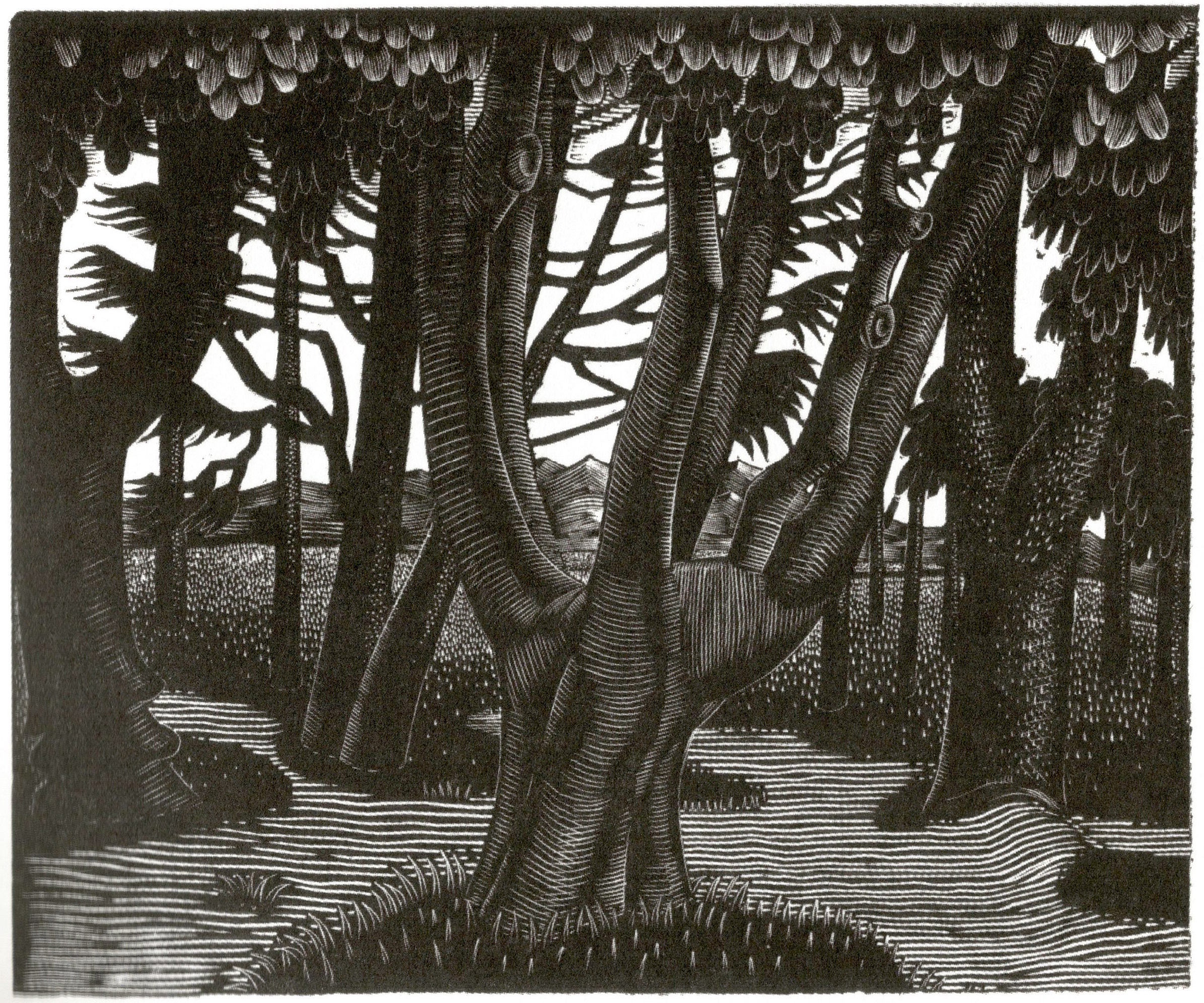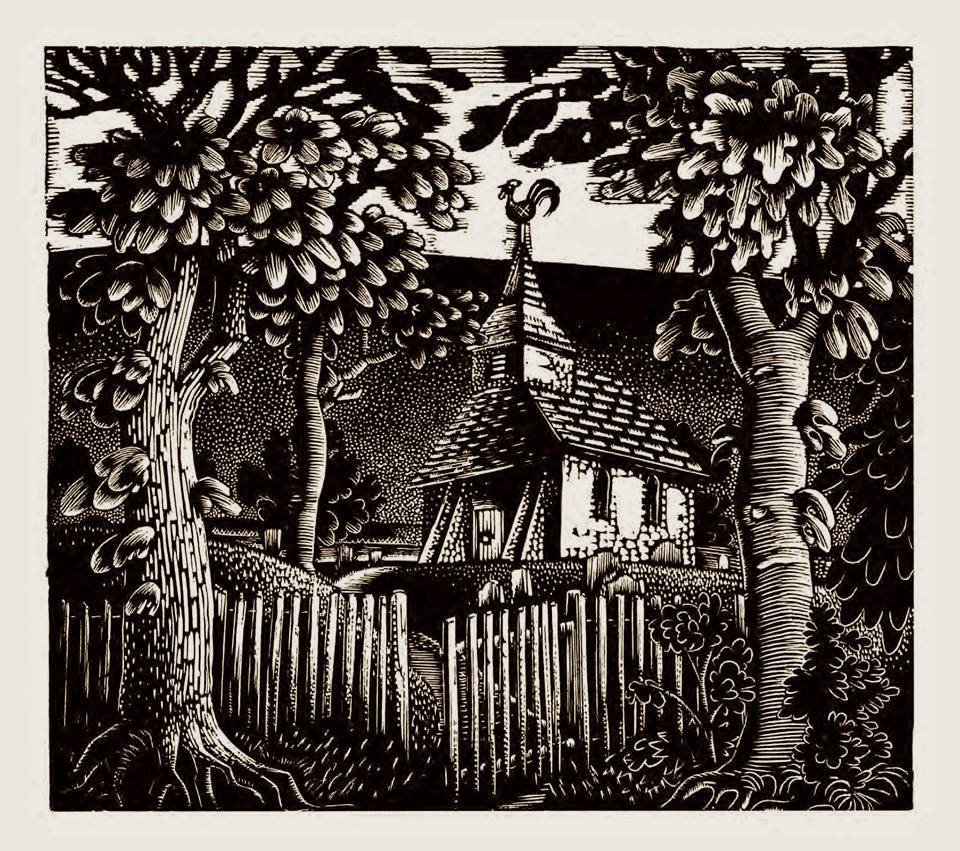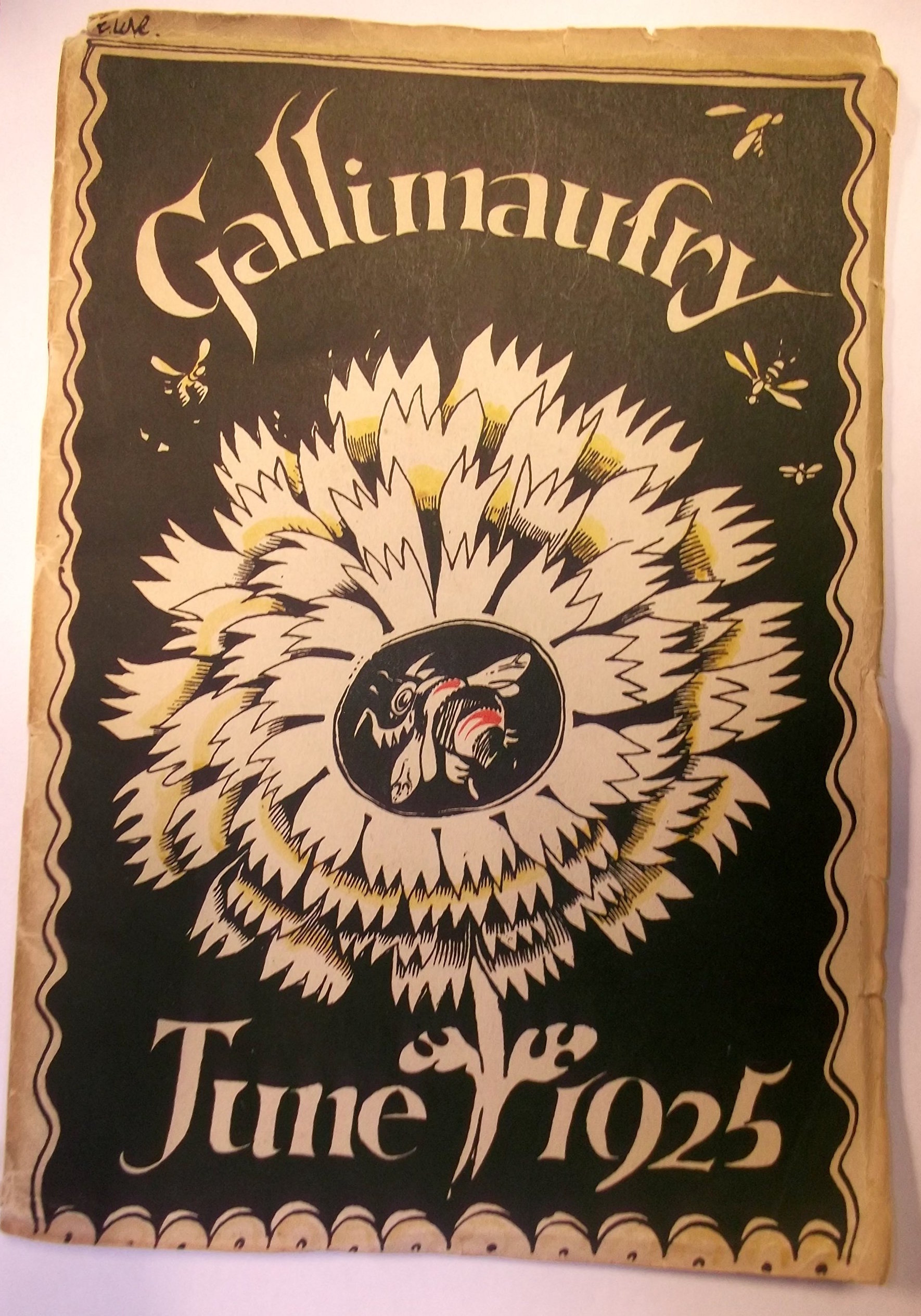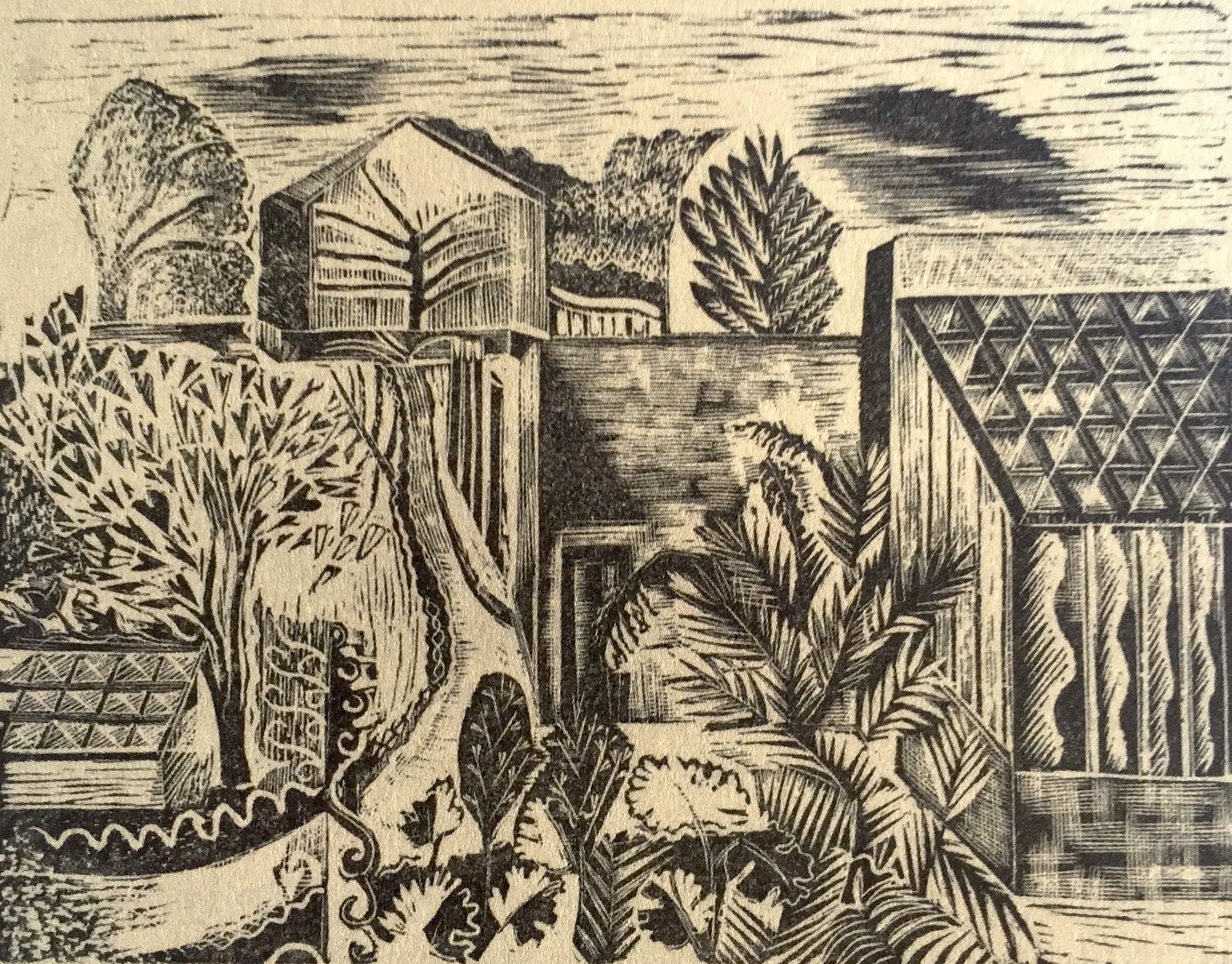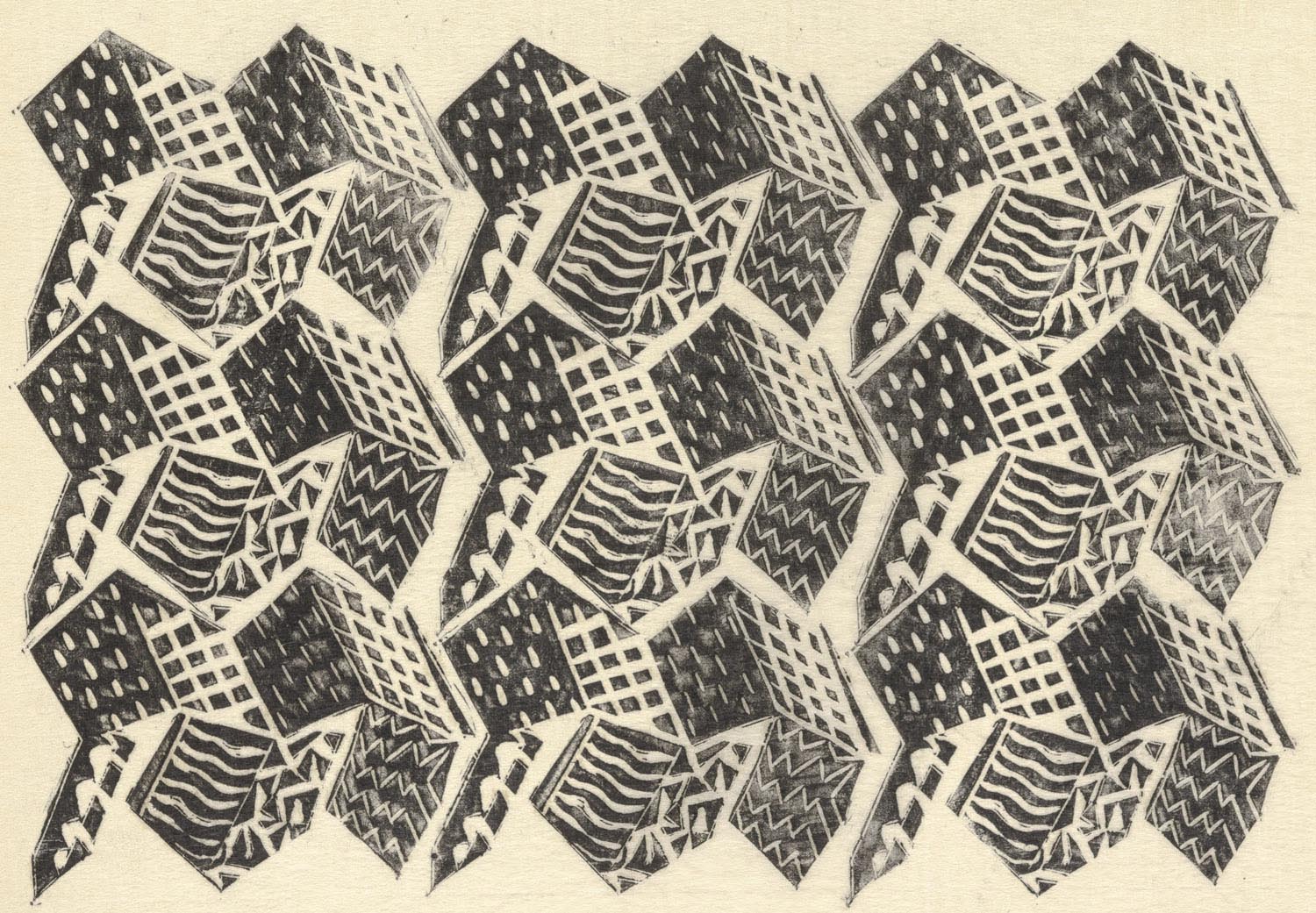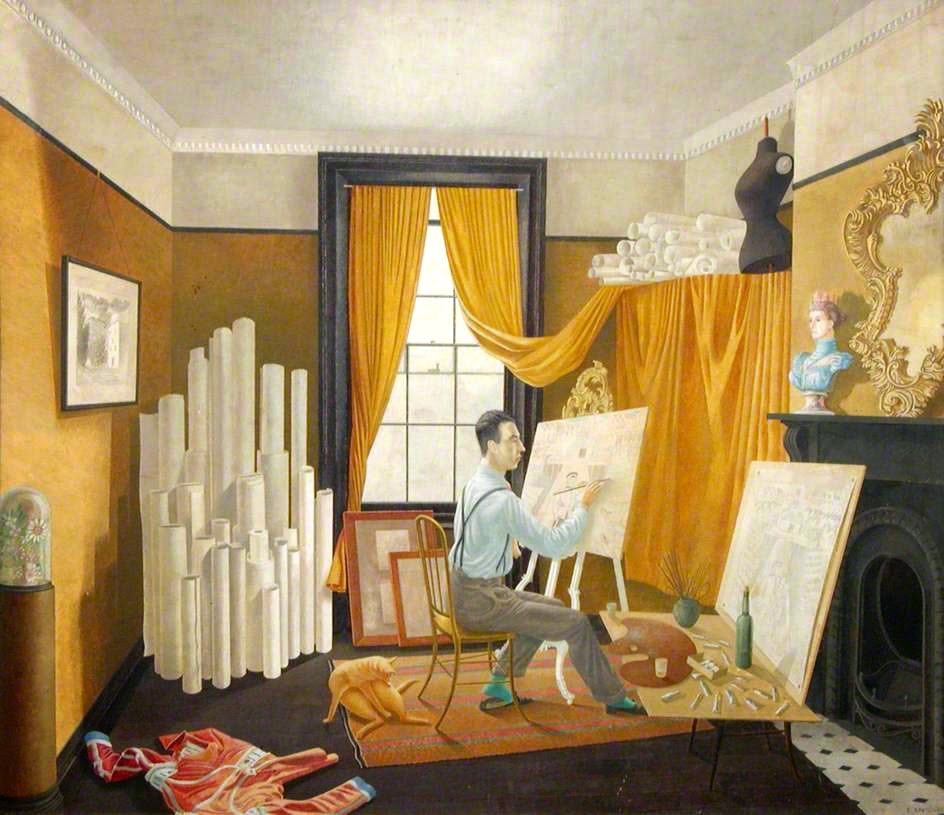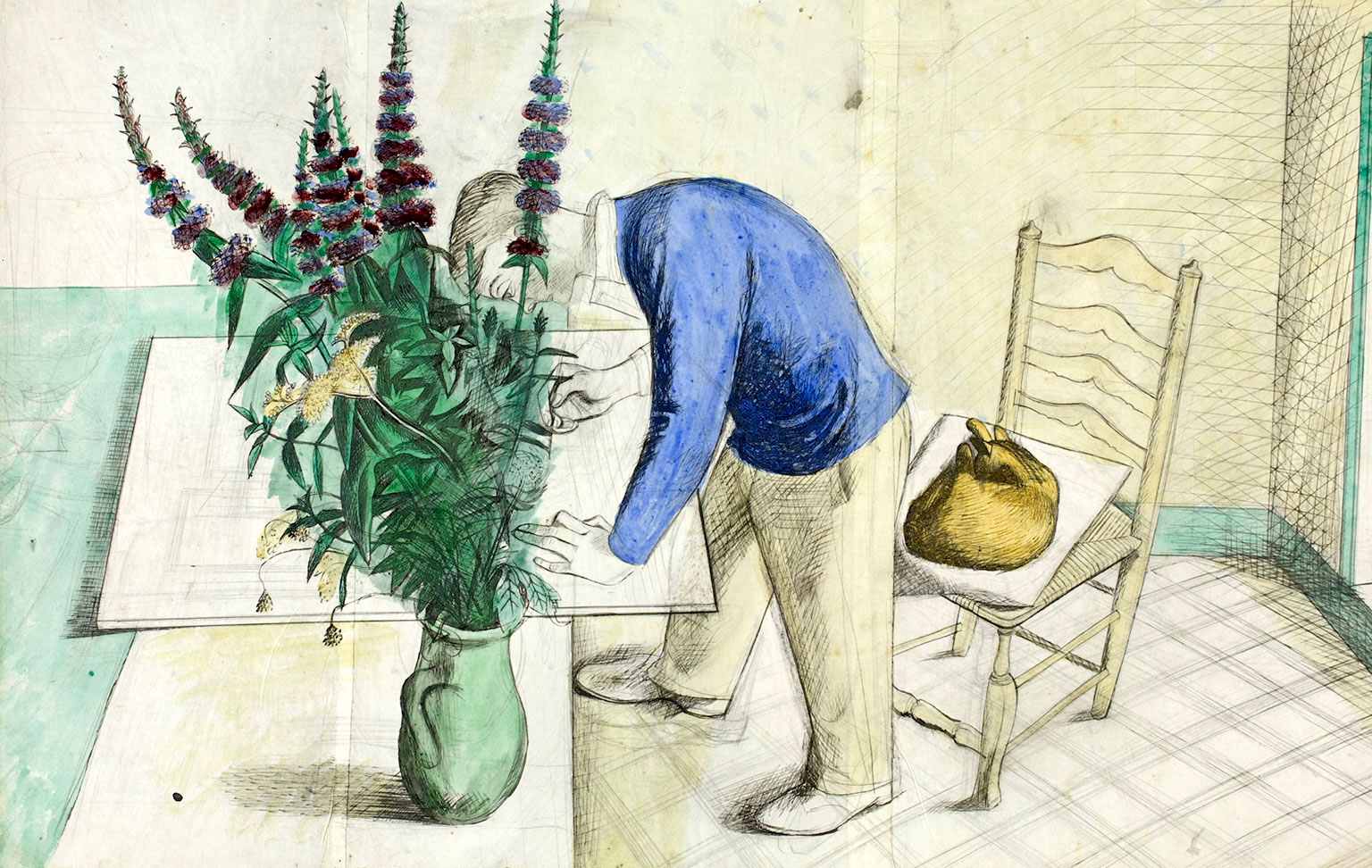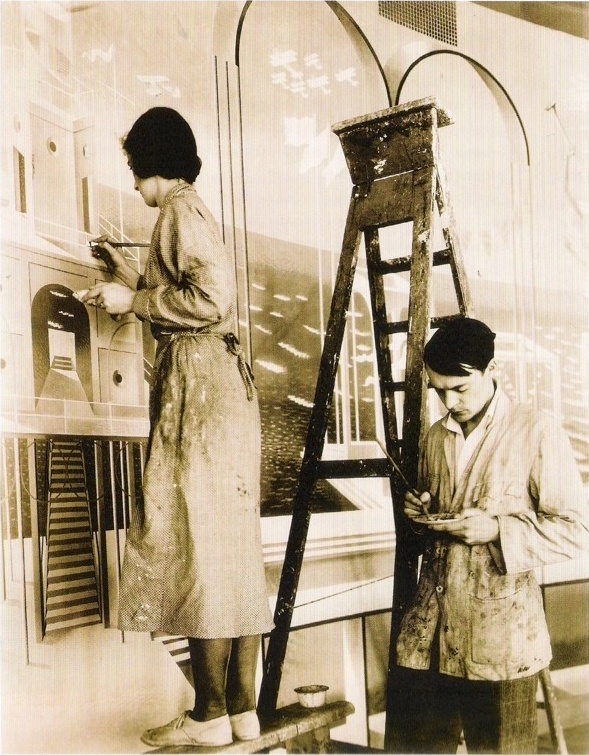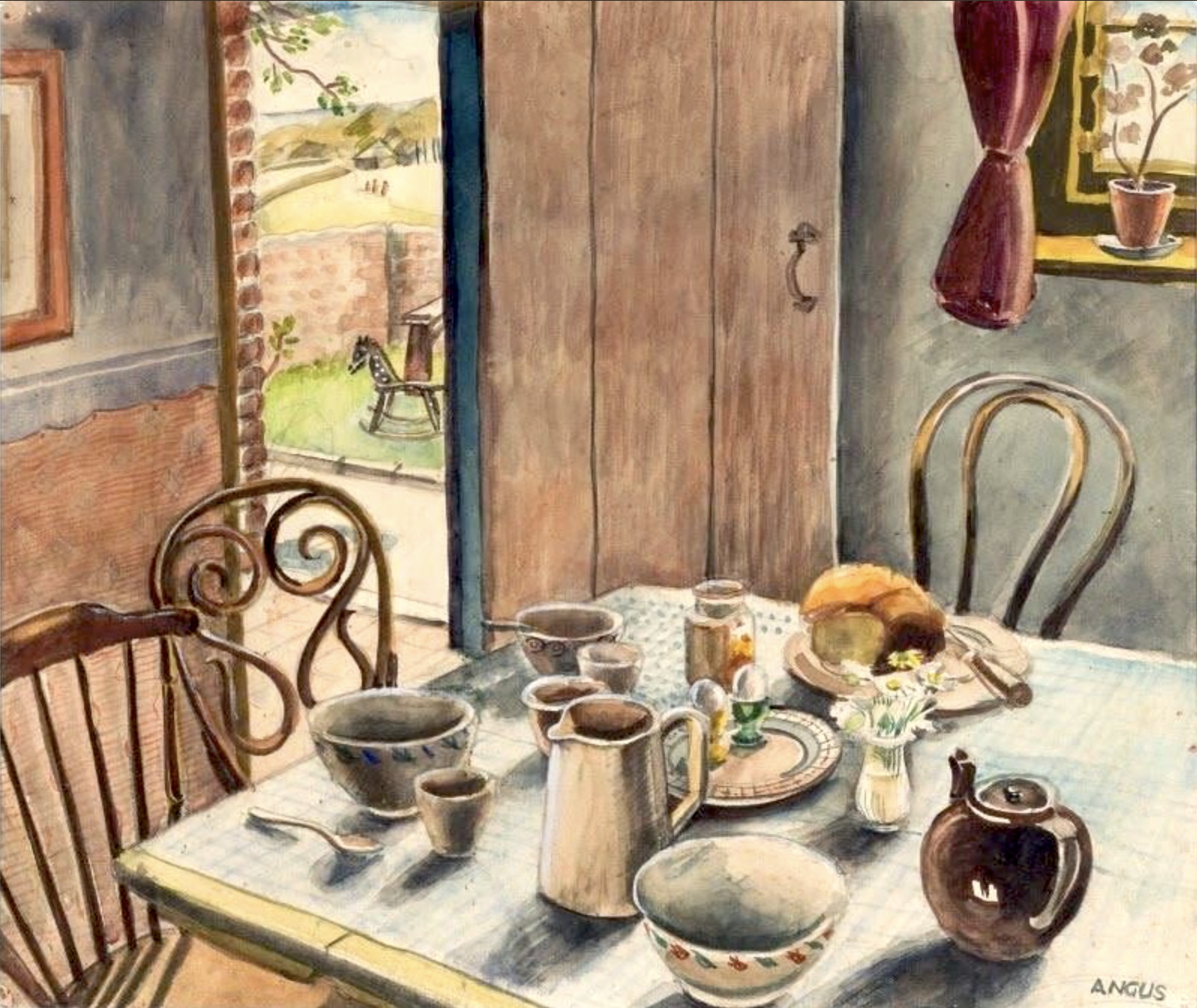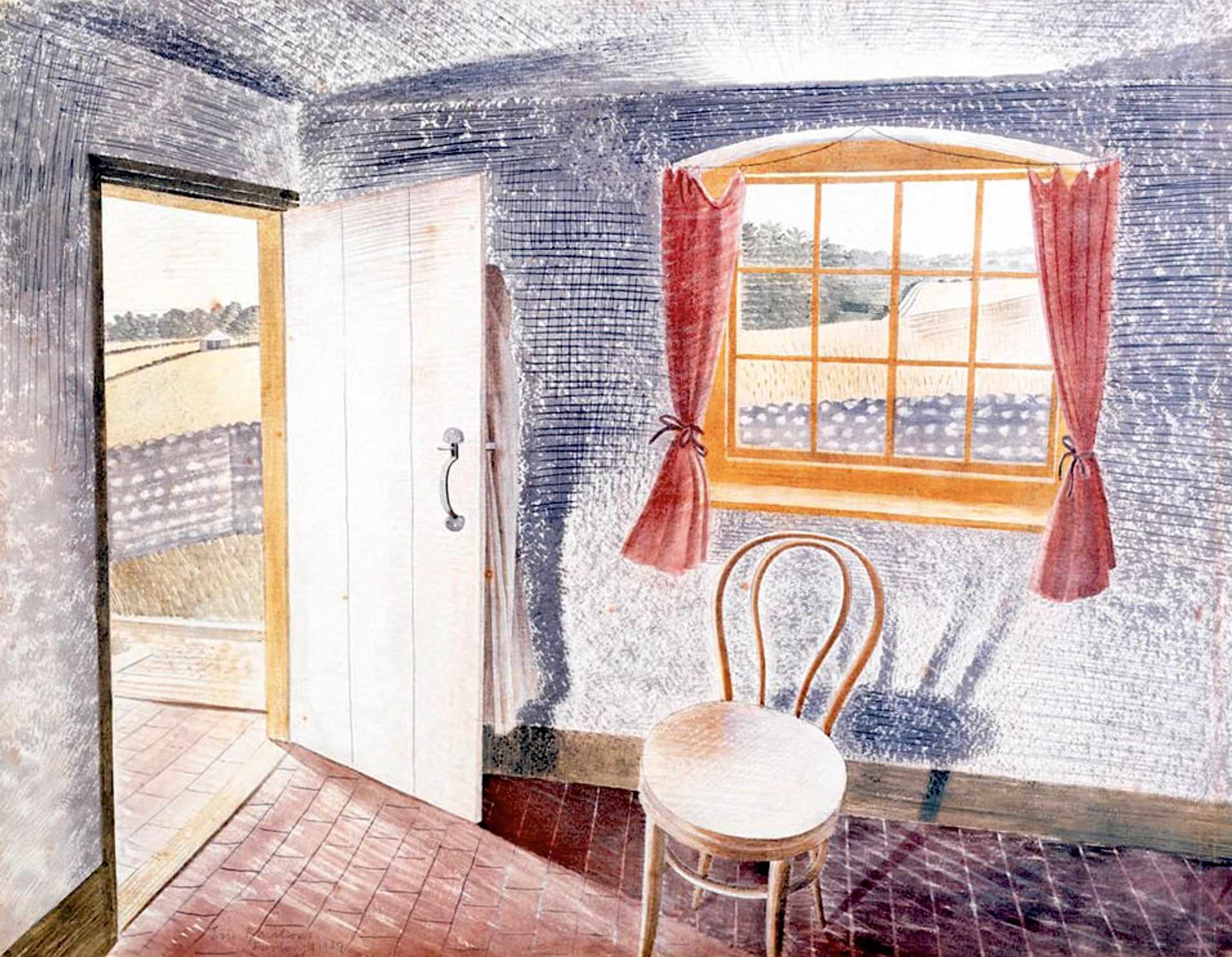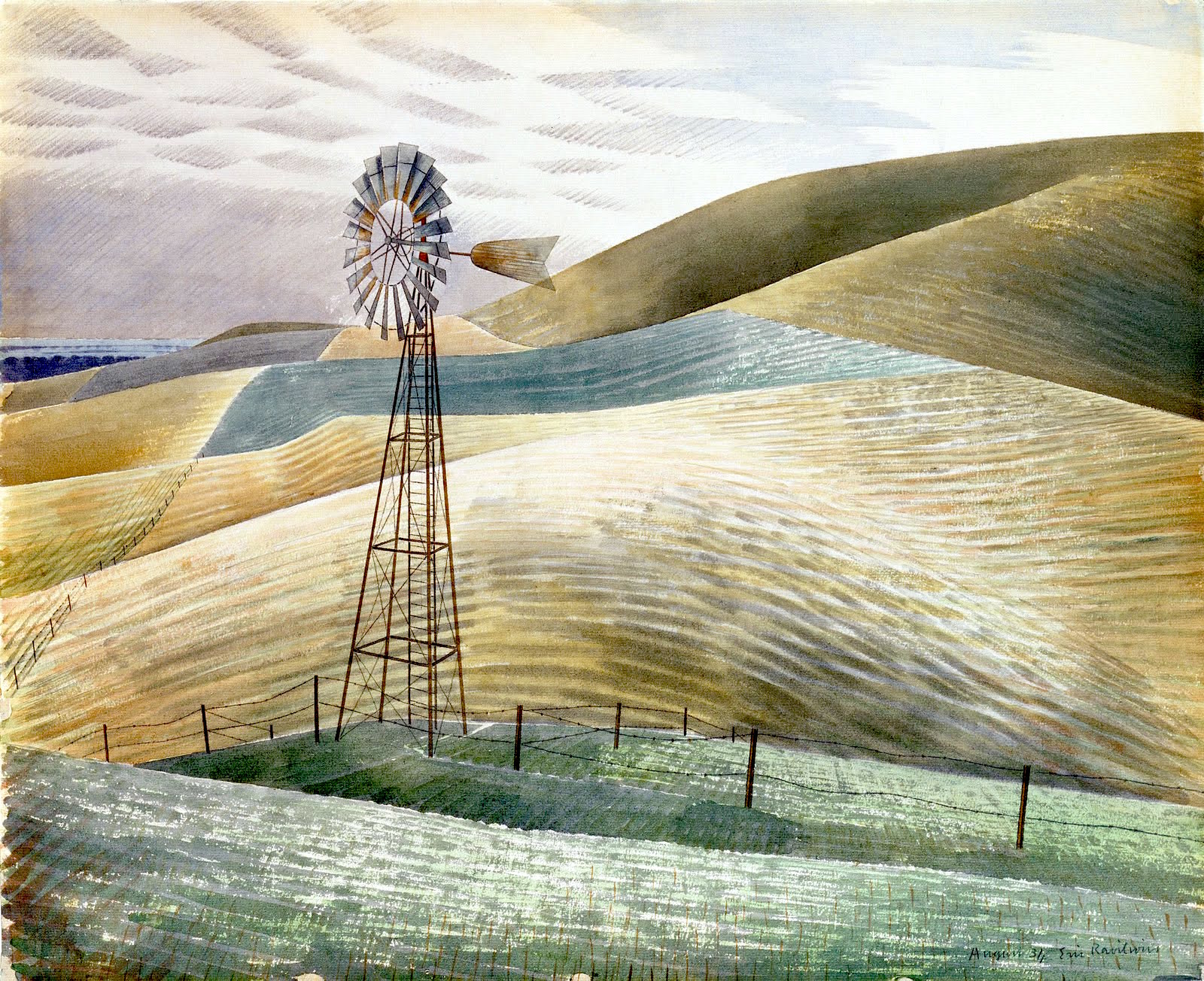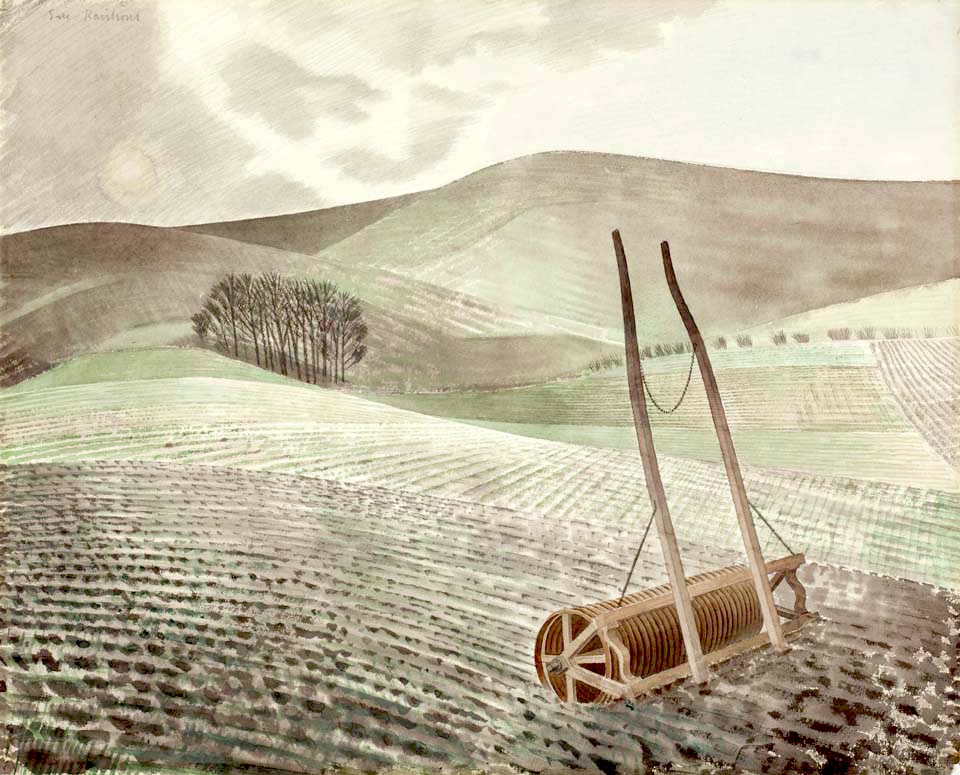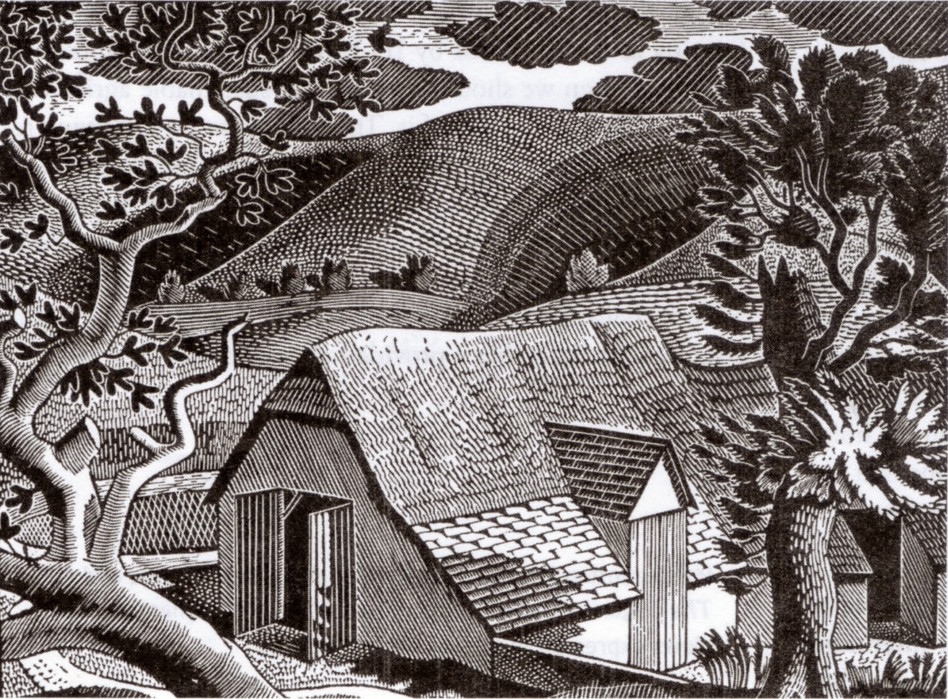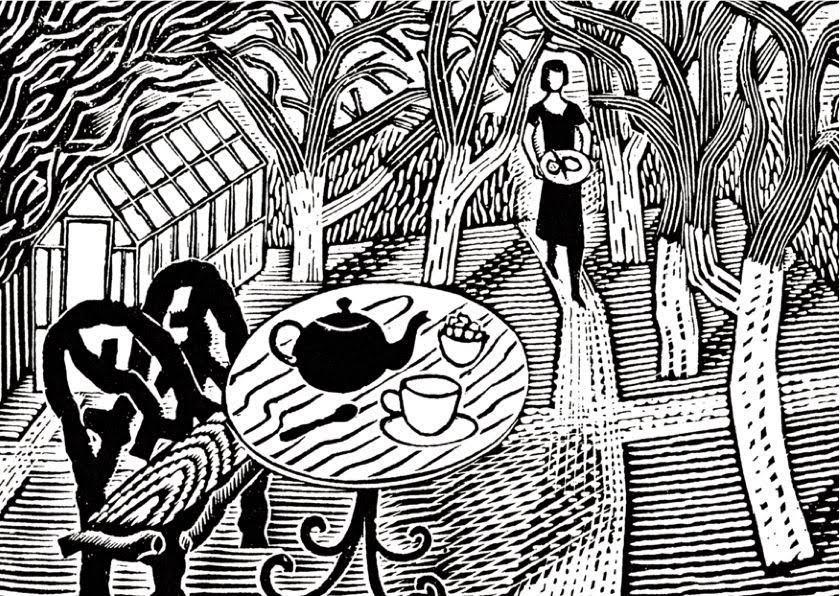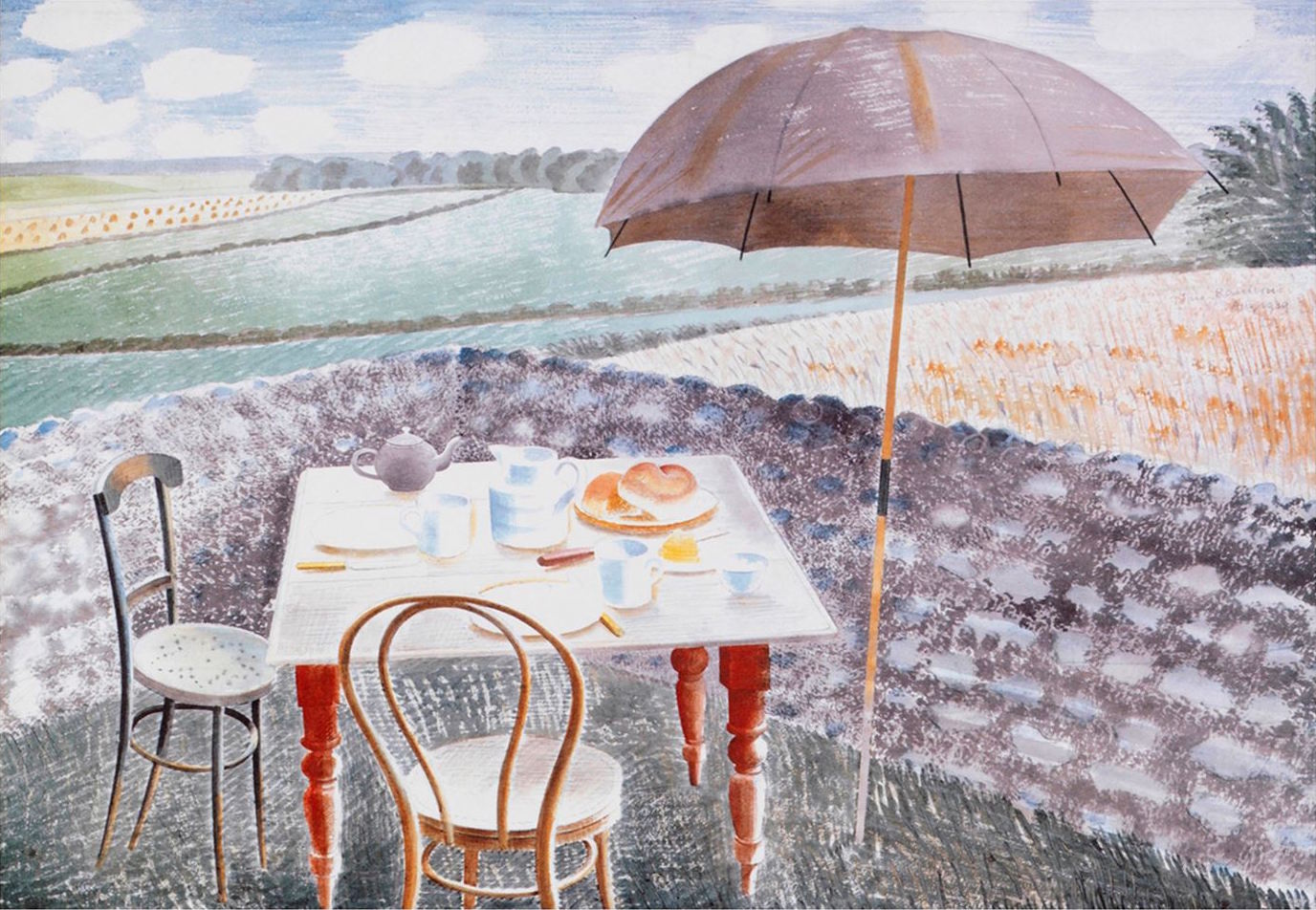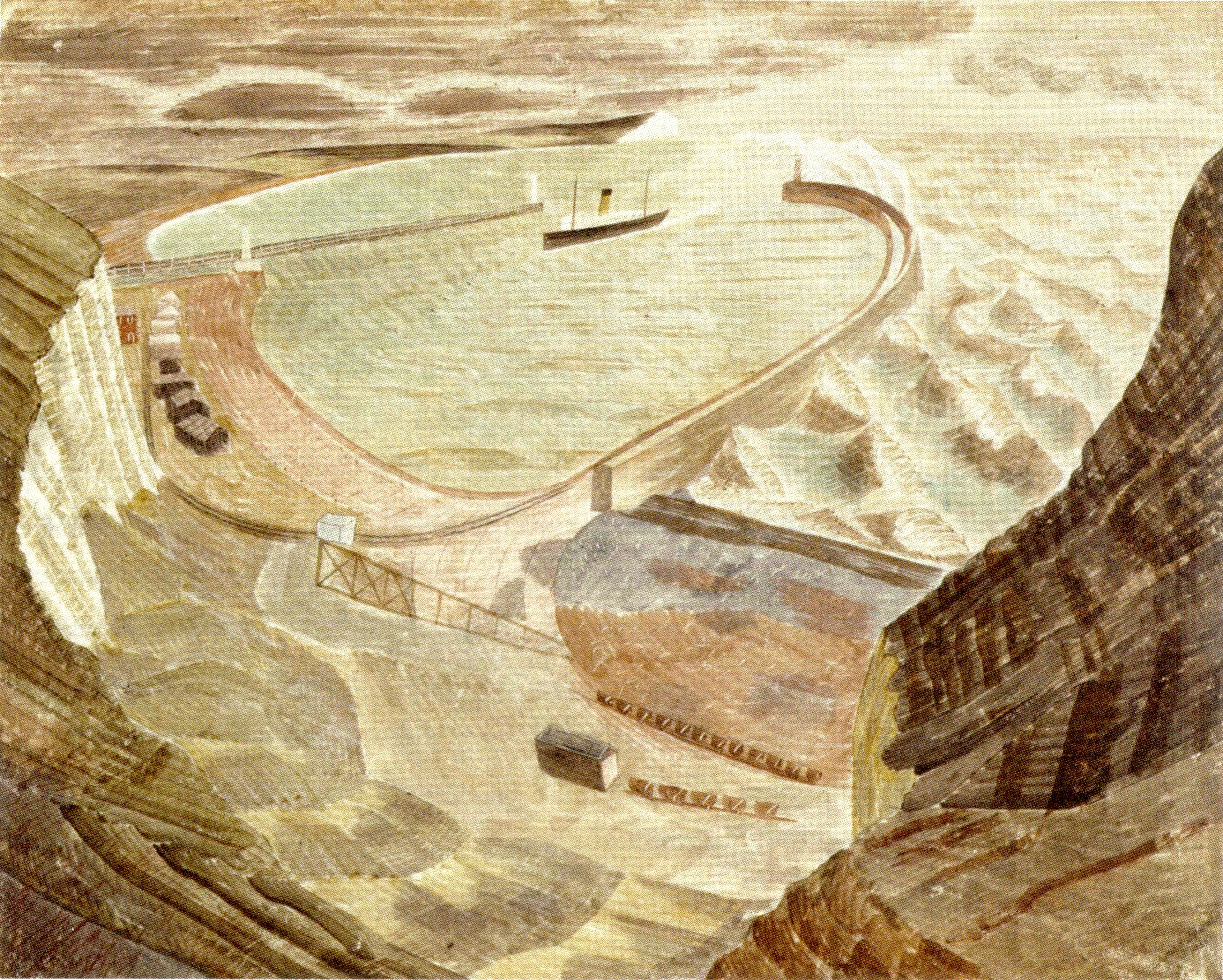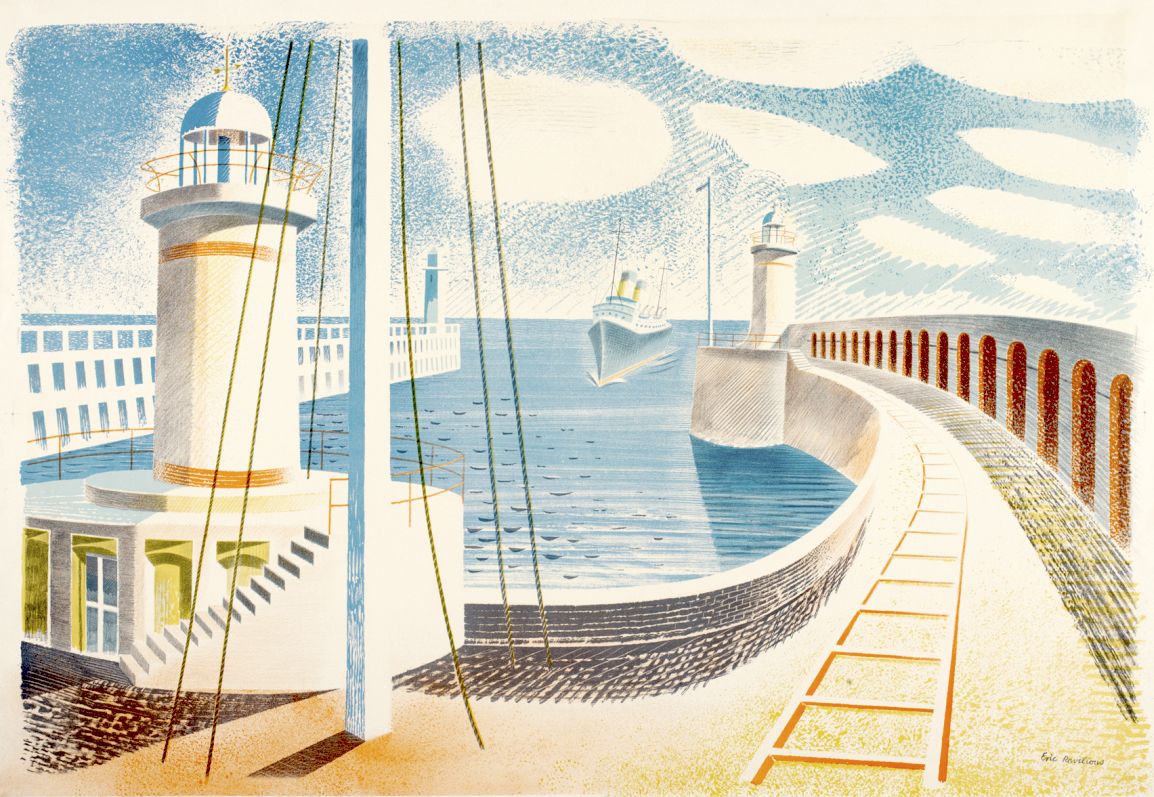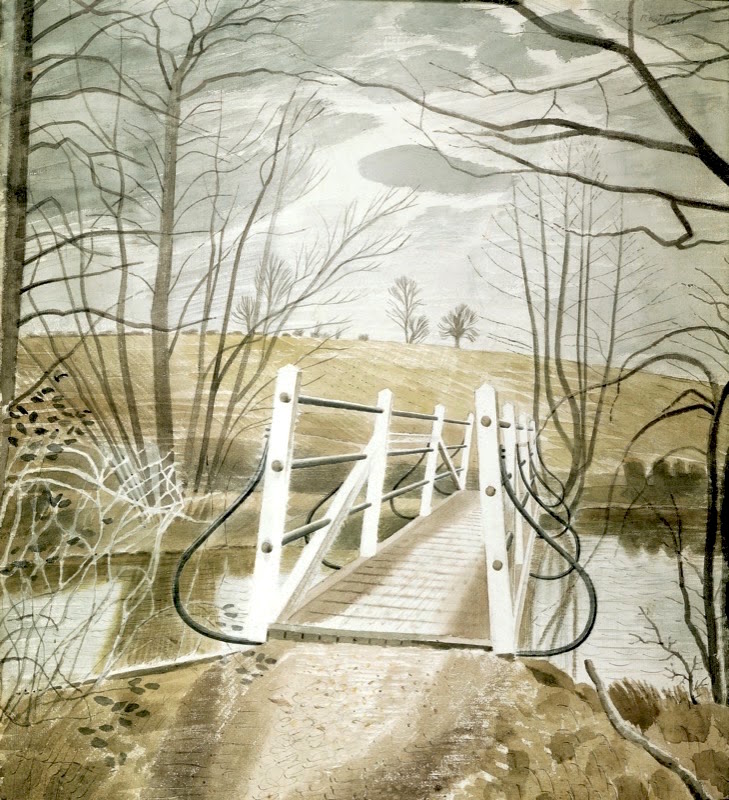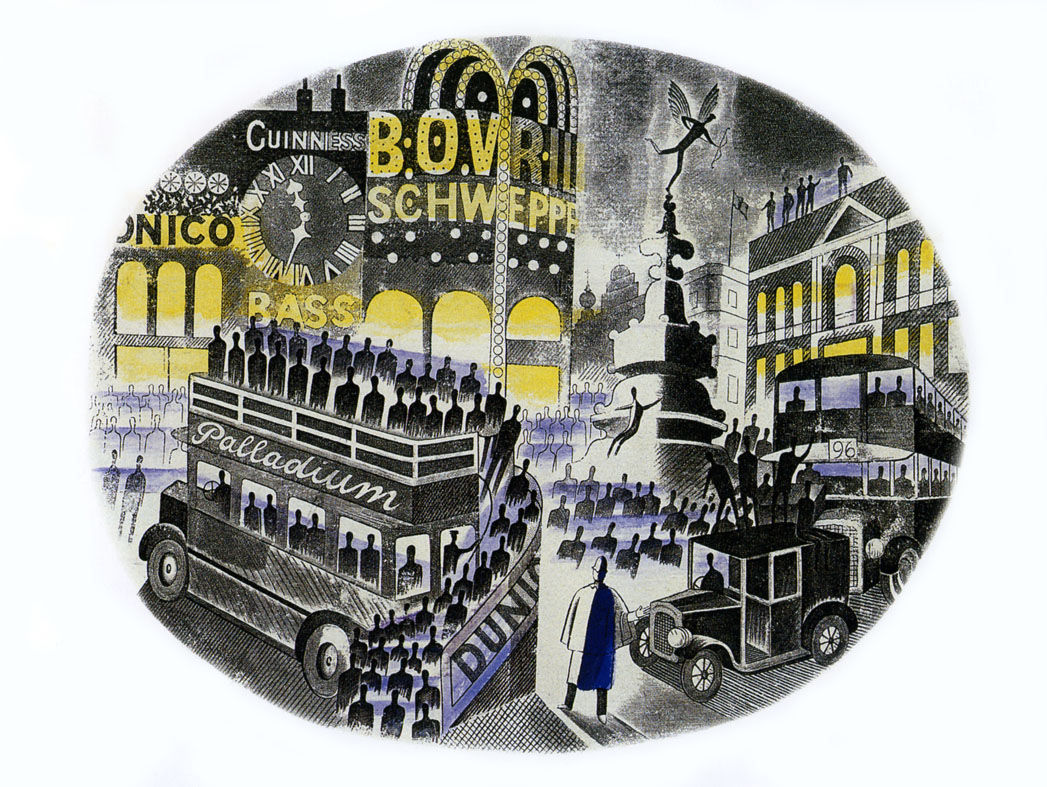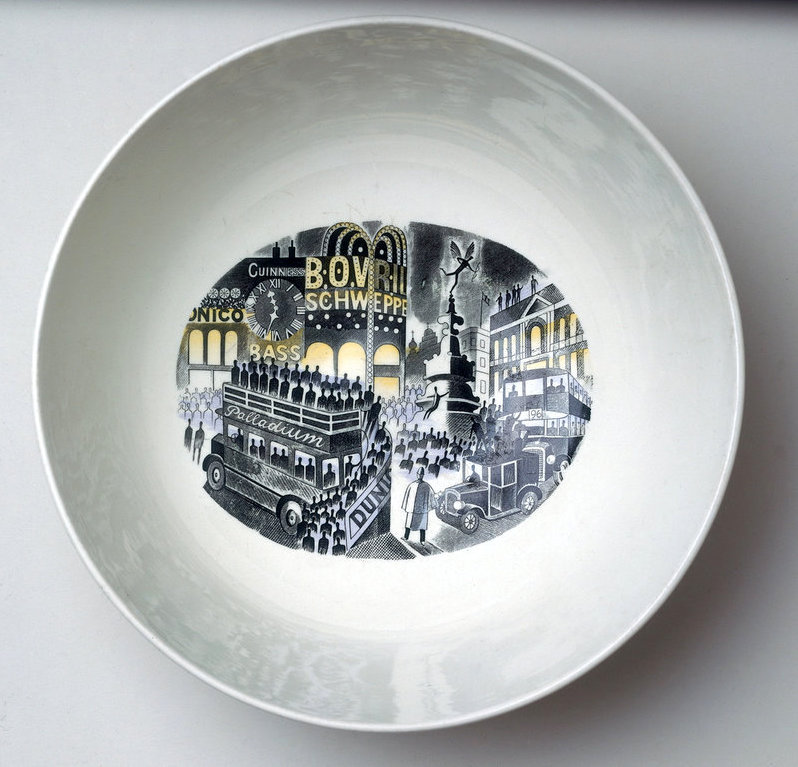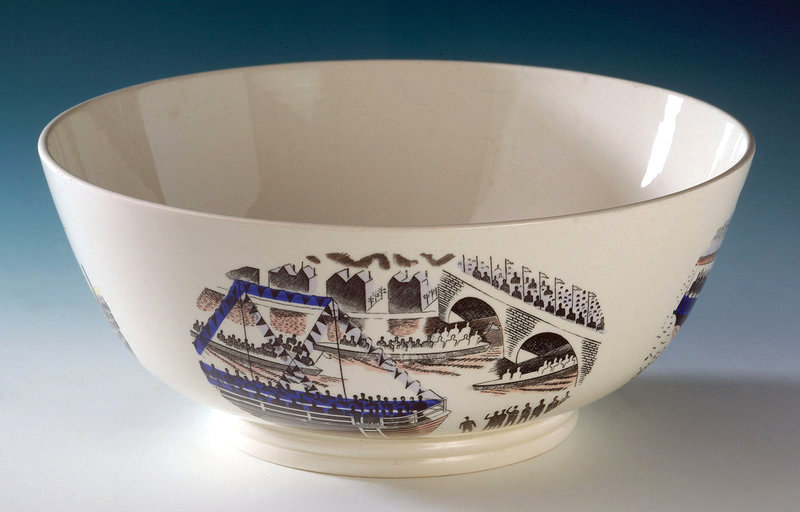We detoured from the M6 via the M42 to the M40 and a few miles south of Warwick we arrived at Compton Verney to see the exhibition Ravilious & Co: The Pattern Of Friendship. There’s an echo of William Morris and Morris & Co in that title. It had been snowing when we arrived and the gallery was closing early. We only had an hour to look around. It was a mad rush with far too much to take in and too little time. I took this photo as we left, since photography was not allowed inside, and this tangle seemed a suitable souvenir of all the various artistic connections explored in the exhibition, not to mention the miles of twisting roads to get there.
This was the view across the park as we approached the house.
John Nash, Chalkpits, Whiteleaf, Buckinghamshire, oil on canvas
This was the view as we entered the gallery, before I was reminded that photography was not allowed.
After John Nash’s teaching session at the Royal College had ended on Friday 4 November 1938, he and Ravilious travelled down to Bristol by train… Ravilious was now looking forward to a week in Nash’s company at a port where six pleasure-steamers that plied south-coast waters in the summer season were laid up for winter; he knew them from childhood and had drawn ‘The Brighton Queen’ during his truncated stay at Newhaven with Bawden just three years before. In the interim, John Nash – with whom he already shared a considerable artistic affinity – had become one of his closest male friends as well as the painter in whose company he felt most consistently at ease.
Following an abortive attempt to take lodgings at the harbour side, they found rooms in easy reach of a cinema and a billiard hall, and on the second night, as John reported to Christine Nash, ‘we got fascinated by the steamers tied up in the Hotwells, faintly illuminated by the street lights and have been out trying to draw them sitting on bollards near the street lamps to the amazement of the inhabitants… At present it is mild and fine here and working by night is really warmer than by day as the wind drops… We seem to get on very well and I feel the move to come here was a success and a stimulus to Eric.’
John Nash, Nocturne, Bristol Docks, watercolour
Eric Ravilious, Paddle Steamers at Night, watercolour
※
Paul Nash, Meeting Place, wood engraving
For a short period during 1924 and 1925, Paul Nash taught briefly at the Royal College of Art, and though he would much rather have been painting than teaching, he later realised how fortunate he was that his time at South Kensington coincided with ‘an outbreak of talent’. According to Enid Marx, ‘Paul Nash was the magnet that drew us together’.
Paul Nash, Dyke by the Road, wood engraving
John Nash, Wood Interior, wood engraving
Eric Ravilious, Woodland outside Florence, wood engraving
Eric Ravilious, Sussex Church, wood engraving
At its centre ‘Sussex Church’ incorporated a fairly straightforward view of Lullington Church in the Cuckmere Valley, but by raising the horizon to create space for stippled downland and employing a gated fence-line in the foreground with a frame of flanking trees, Ravilious moves beyond a literal representation of the location to create his sense of place. Nash was sharing his enthusiasm for Samuel Palmer at this time… As he developed the design, Ravilious may well have had in mind Palmer’s A Hilly Scene… Described by Douglas Percy Bliss as his friend’s ‘first ambitious block’, this piece was completed by Ravilious prior to his departure for Italy in January 1925 and appeared in ‘Gallimaufry’, published at the time of his return in 1925.
Enid Marx, Back Garden, wood engraving
Enid Marx, Abstract Pattern, wood engraving
Enid Marx, The Downs above Plumpton, pen, wash and watercolour
I remembered Plumpton as the place we took the train to, the first time we went to Ditchling over 20 years ago. We’d walked across country from the station which was next to the racecourse. And then I remembered Enid Marx from 15 years earlier, when I’d helped hang an exhibition of her work at Camden Arts Centre and I discovered she’d designed upholstery fabric for London Underground.
Eric Ravilious, Firle Beacon, pencil and watercolour
And the first time we visited Charleston Farmhouse we walked over fields below Firle Beacon from the station at Glynde. I wonder what Ravilious & Co made of Duncan Grant & Co?
Eric Ravilious, Portrait of Edward Bawden, tempera on board
Edward Bawden, The Boy – Eric Ravilious in his studio at Redcliffe Road, watercolour
For more than a year the two friends were living in each other’s pockets, often on site together four days a week (they were working on a joint mural at Morley College). After Ravilious ceased teaching in Eastbourne, he moved into two rooms at 52 Redcliffe Road, above Bawden who had taken over Phyllis Dodd’s ground-floor rooms. Her yellow curtains were still present in Ravilious’s painting of Bawden at work there, rolled cartoons for the decorations standing sentinel in the corner, and a trademark Ravilious ‘cat at its toilet’ beside a discarded guardsman’s jacket. Painted in tempera on board, executed in late 1930, precisely detailed and highly finished, the work is an affectionate tribute to a quirky and industrious collaborator. In the absence of the destroyed Morley decorations, it demonstrates why onlookers were so struck by the freshness and originality of the murals themselves. Bawden had already foreshadowed the compliment with a watercolour of Ravilious, cat asleep behind him, at work on what appears to be a Morley cartoon.
In 1933 Ravilious and his wife Tirza Garwood spent a frustrating four months working on murals at the Midland Hotel in Morecambe. The plaster surfaces prepared for them by the departed builders were uncured and often needed to be stripped and begun again. The paintings have not survived.
Peggy Angus, The Three Bears, Furlongs, oil on canvas
Eric Ravilious, Interior at Furlongs, watercolour
Peggy left that day urging them all to visit her at Furlongs, the primitive shepherd’s cottage she had been renting for the last six months near Lewes… An evocative passage from Helen Binyon’s ‘Memoir of an Artist’ describes Eric and Tirzah arriving at Furlongs for the first time in spring 1934. After alighting at Glynde station with rucksacks and painting gear, collecting milk at a farm, and crossing the main Lewes to Eastbourne road:
‘They continued along a narrowing tree-lined lane, until they reached an open field, with the swelling slopes of the chalk Downs beyond, their rounded tops bare against the sky. They turned to the right, along a deeply rutted track, past a little copse, over which towered the creaking wheel of a wind pump… Ahead and still some way off, they saw the cottage; it stood squarely above the track [and] seemed to guard the way to the Down behind… Eric was enchanted by it all and saw subjects for his painting everywhere. The spaciousness and breadth of land and of skies excited him after the more domestic scenes he had painted in Essex, and he felt he had come to his own country…’
Eric Ravilious, Waterwheel, watercolour
Eric Ravilious, Downs in Winter, watercolour
Eric Ravilious, Sussex Landscape, wood engraving
Eric Ravilious, Afternoon Tea, wood engraving
Eric Ravilious, Tea at Furlongs, watercolour
Edward Bawden, Ferryboat Entering Newhaven Harbour, watercolour
Eric Ravilious, Newhaven Harbour, watercolour
Eric Ravilious, Iron Bridge at Ewenbridge, watercolour
In September 1942, only months after completing this painting, Ravilious was reported missing off the coast of Iceland.
James Russell: Ravilious in Pictures
These are just a few of the many highlights of the exhibition. I’ve barely scratched the surface. Paintings, drawings and prints by Eric Ravilious and Edward Bawden are interspersed with others by John Nash and Paul Nash, together with Barnett Freedman, Enid Marx, Tirzah Garwood, Percy Horton, Peggy Angus, Helen Binyon, Thomas Hennell, Phyllis Bliss, Diana Low and William Nicholson. There are pictures, posters, books, letterpress, leaflets and letters, a huge quantity of stuff, enough research material to write a book! It’s a lot to get through so allow more than just one hour.
Ice House at Compton Verney
Ravilious & Co: The Pattern of Friendship
※
One week later. It was the weekend of the Boat Race and on the Saturday I was working at the Rowley Gallery. A customer asked if we had a greetings card with a picture of the river. I noticed the embroidered badge on her jacket, bright orange crossed oars above the words Champion of the Thames, Cambridge. She said she was rowing in a veterans race the next day. And suddenly I remembered we had a card with the above image, a picture of Piccadilly Circus by Eric Ravilious with the title on the back – Boat Race Day 1938. “Lovely!” she said, “Well done! I’ll take two!”
The design was commissioned by Wedgewood and it featured on the inside of their 12″ diameter earthenware Boat Race bowl. The outside was decorated with four boat race related designs. There’s an example in the V&A collection but the one I know best is at the Fry Art Gallery.
As I drove home from work I heard on the car radio that Cambridge had won the women’s race
and then a few minutes later I heard they’d won the men’s race too. “Well done! I’ll take two!”





